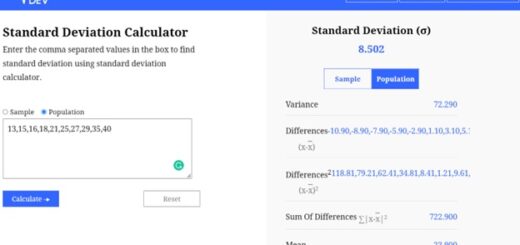Variance Equality Bartlett’s Test
Variance Equality Bartlett’s Test is a statistical method designed to assess whether the variances among multiple groups are equal.
This test is crucial for verifying assumptions that underpin many statistical analyses, including one-way ANOVA.
Variance Equality Bartlett’s Test
In this article, we will delve into the details of Bartlett’s Test, provide a step-by-step guide on how to perform it, and illustrate its application with an example.
What is Bartlett’s Test?
Bartlett’s Test serves as a means to evaluate the homogeneity of variances across different groups.
Many statistical tests, especially those like one-way ANOVA, rely on the assumption that the variances of the groups being compared are equal.
If this assumption is violated, the results of these tests can be misleading. Bartlett’s Test helps researchers confirm whether variances can be considered equal before proceeding with further analysis.
Important Distinction: Bartlett’s Test of Sphericity
It is essential to differentiate Bartlett’s Test from Bartlett’s Test of Sphericity, which is utilized to compare an observed correlation matrix against the identity matrix.
Hypotheses in Bartlett’s Test
When performing Bartlett’s Test, researchers establish the following hypotheses:
- Null Hypothesis (H0): The variances among each group are equal.
- Alternative Hypothesis (HA): At least one group possesses a variance that differs from the others.
Steps to Perform Bartlett’s Test
Calculate the Test Statistic:
The test statistic ( B ) can be computed using the formula:
B=(n−k)lns2−∑(nj−1)lnsj2/c
Where:
n = Total number of observations across all groups
k = Total number of groups
ln = Natural logarithm
s2 = Pooled variance
nj = Number of observations in group j
sj = Variance of group j
Calculate c
c = 1 + (1/3(k-1))*(Σ(1/(nj-1)) – (1/(n-k))
Distribution and Degrees of Freedom:
The resulting test statistic follows a Chi-Square distribution with ( k – 1 ) degrees of freedom, denoted as ( B chi^2(k – 1) ).
Interpret Results:
If the p-value associated with the test statistic is less than the chosen significance level (commonly ( alpha = 0.05 )), we reject the null hypothesis, indicating that not all groups have the same variance.
Example of Bartlett’s Test
Imagine a scenario where a professor wants to evaluate the effectiveness of three studying techniques on student performance.
She randomly assigns 10 students to each technique, totaling 30 students. After one week of study, all students take the same exam.
The professor’s objective is to conduct a one-way ANOVA to determine if the studying techniques yield different average exam scores.
However, prior to this, she must confirm the equality of variances among the three groups using Bartlett’s Test.
Sample Dataset for Bartlett’s Test
The professor enters the scores of her 30 students into a Bartlett’s Test Calculator, as performing the calculations manually can be cumbersome.
Assume the following hypothetical results are returned:
- Test Statistic ( B ): 3.30244
- P-value: 0.19182
Conclusion from the Example
Since the p-value (0.19182) is greater than 0.05, the professor fails to reject the null hypothesis.
This means there is insufficient evidence to suggest that the variances among the three groups are unequal. Consequently, she can confidently proceed to perform the one-way ANOVA.
Conclusion
Bartlett’s Test is an essential tool for researchers seeking to ensure the validity of their statistical analyses.
By confirming the equality of variances among groups, Bartlett’s Test helps maintain the integrity of results derived from methods like one-way ANOVA.
Understanding how to properly conduct and interpret this test is critical for accurate data analysis, enabling researchers to draw valid conclusions from their studies.
Whether you are in academia, healthcare, or any field that relies on statistical analysis, mastering Bartlett’s Test will enhance your research methods and improve the reliability of your findings.




